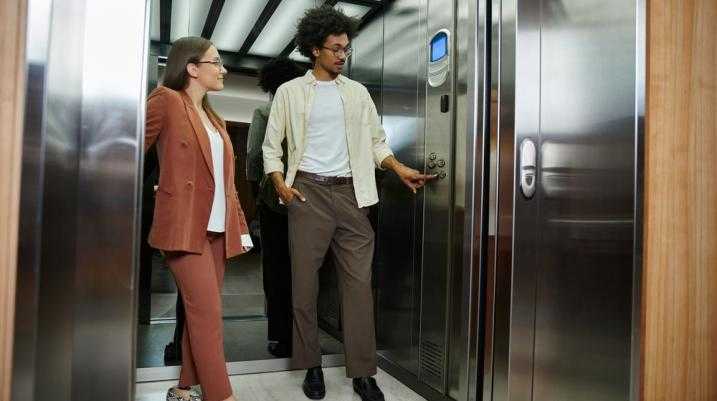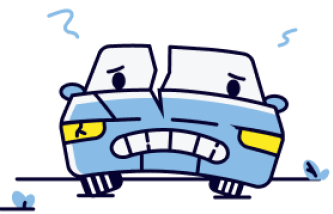Elevator Accident Lawsuits: Your Rights and Legal Options

Elevators are a modern convenience that we often take for granted. Whether in office buildings, apartment complexes, or shopping malls, they help us navigate multi-story structures with ease.
However, when elevators malfunction or are improperly maintained, the consequences can be devastating. Injuries resulting from elevator accidents are often severe, leading to physical pain, emotional distress, and financial burdens.
Common Causes of Elevator Accidents
Elevator accidents can result from various factors, many of which stem from negligence. Common causes include:
- Mechanical Failures: Faulty components such as brakes, cables, or pulleys can lead to sudden drops or stops.
- Improper Maintenance: Elevators require regular inspections and maintenance to function safely. Neglected maintenance increases the likelihood of accidents.
- Installation Errors: Poor installation practices can compromise the structural integrity and functionality of an elevator.
- Electrical Issues: Problems with wiring or control systems can cause sudden stops, power failures, or door malfunctions.
- Human Error: Operators or maintenance personnel may inadvertently cause accidents due to improper handling or oversight.
- Design Defects: Manufacturing defects in elevator parts can lead to hazardous conditions.
- Overloading: Exceeding an elevator’s weight capacity can cause it to malfunction or collapse.
Types of Elevator Accidents
Elevator accidents can occur in various forms, including:
- Sudden Drops or Free Falls: Malfunctioning cables or pulleys can cause an elevator to plummet unexpectedly.
- Door Malfunctions: Faulty sensors or mechanical issues can cause doors to close on passengers.
- Entrapment: Individuals may become trapped inside an elevator due to power outages or mechanical failures.
- Trip and Fall Accidents: Uneven leveling between the elevator and floor surface can lead to trips and falls.
- Crush Injuries: Accidents involving moving elevator parts can result in severe crush injuries.
- Struck-by Accidents: External elevator components may malfunction, causing objects to strike individuals.
Injuries Resulting From Elevator Accidents
Elevator accidents can result in serious injuries, including:
- Broken Bones: Falls or sudden impacts can lead to fractures.
- Spinal Cord Injuries: Sudden jerks or falls may damage the spinal cord, potentially resulting in paralysis.
- Head and Brain Injuries: Impact with elevator walls or floors can cause traumatic brain injuries.
- Crush Injuries: Limbs caught in elevator doors or mechanisms can result in severe damage or amputation.
- Soft Tissue Injuries: Sprains, strains, and contusions are common in less severe accidents.
- Emotional Distress: The trauma of being involved in an elevator accident can lead to anxiety, depression, or post-traumatic stress disorder (PTSD).
Determining Liability in Elevator Accidents
One of the most critical aspects of an elevator accident lawsuit is identifying the party or parties responsible for the accident. Possible defendants include:
Property Owners and Managers
Property owners and managers are typically responsible for ensuring that elevators in their buildings are safe. Failure to schedule regular inspections, perform necessary maintenance, or address known issues can make them liable for accidents.
Maintenance Companies
Elevator maintenance companies are often contracted to service and repair elevators. If they fail to perform their duties competently or neglect necessary repairs, they may share liability for accidents.
Manufacturers
If a design or manufacturing defect contributed to the accident, the manufacturer of the elevator or its components could be held liable under product liability laws.
Installation Contractors
Improper installation can lead to mechanical or structural issues. Contractors responsible for the elevator’s installation may bear liability if their negligence caused the accident.
Third Parties
In some cases, third parties such as vendors or construction companies working near the elevator may inadvertently cause damage or malfunctions, contributing to accidents.
Proving Fault in an Elevator Accident Lawsuit
Proving fault in elevator accident lawsuits often involve one or more of the following legal theories:
Negligence
To succeed in a negligence claim, you must prove:
- The defendant owed you a duty of care.
- The defendant breached that duty.
- The breach caused your injury.
- You suffered damages as a result.
Premises Liability
Property owners have a legal obligation to ensure their premises, including elevators, are reasonably safe for occupants and visitors. Failure to do so may result in liability under premises liability laws.
Product Liability
If a defective elevator component caused the accident, the manufacturer may be held liable under product liability laws. This can include claims based on:
- Design defects
- Manufacturing defects
- Failure to warn
Breach of Contract
If a maintenance company or contractor failed to fulfill their contractual obligations, they could be held liable for damages stemming from their breach.
Compensation for Elevator Accident Victims
Victims of elevator accidents may be entitled to various forms of compensation, including:
Economic Damages
- Medical Expenses: Coverage for hospital bills, surgeries, medications, physical therapy, and other treatment costs.
- Lost Wages: Compensation for income lost due to the inability to work during recovery.
- Future Earnings: Damages for diminished earning capacity if the injury results in long-term or permanent disability.
- Property Damage: Reimbursement for personal property damaged in the accident.
Non-Economic Damages
- Pain and Suffering: Compensation for physical pain and emotional distress.
- Loss of Enjoyment of Life: Damages for the inability to enjoy activities or hobbies.
- Emotional Distress: Compensation for psychological trauma, such as PTSD or anxiety.
Punitive Damages
In cases involving gross negligence or intentional misconduct, the court may award punitive damages to punish the defendant and deter similar behavior.
Steps to Take After an Elevator Accident
If you’ve been involved in an elevator accident, seek immediate medical attention—first and foremost. Prioritize your health and document your injuries with medical records.
Notify the property owner, building manager, or security personnel immediately. Take photographs or videos of the elevator and surrounding area. Note any visible defects or hazards. You should also obtain contact information for anyone who witnessed the accident.
Save any clothing, footwear, or personal items involved in the accident. This is all important evidence for a personal injury claim.
Next, contact Morgan & Morgan. Speak with one of our experienced personal injury attorneys to evaluate your case and determine the best course of action.
Morgan & Morgan Can Help
Navigating an elevator accident lawsuit can be complex, especially when multiple parties and legal theories are involved. At Morgan & Morgan, we have decades of experience handling personal injury cases and fighting for the rights of accident victims.
Our attorneys will review the details of your case and provide a comprehensive assessment of your legal options. We will conduct a thorough investigation to identify the cause of the accident and gather critical evidence, such as maintenance records, inspection logs, and witness statements.
We also collaborate with industry experts, including engineers and medical professionals, to build a strong case on your behalf.
Whether through settlement negotiations or courtroom litigation, our team is prepared to fight tirelessly to secure the compensation you deserve.
Elevator accidents can have life-altering consequences, but you don’t have to face the aftermath alone. If you or a loved one has been injured in an elevator accident, the attorneys at Morgan & Morgan are here to help. With our experience, resources, and dedication, we will work to ensure that those responsible are held accountable and that you receive the compensation you need to move forward.
Contact us today for a free, no-obligation case evaluation. Remember, we work on a contingency fee basis—you don’t pay unless we win. Let Morgan & Morgan be your advocate in your fight for justice.
Injured? Getting the compensation you deserve starts here.

Injured?
Not sure what to do next?
We'll guide you through everything you need to know.
